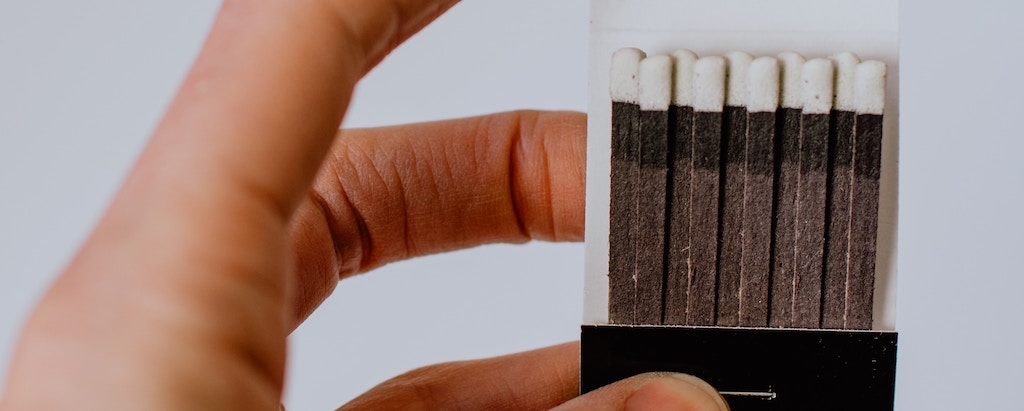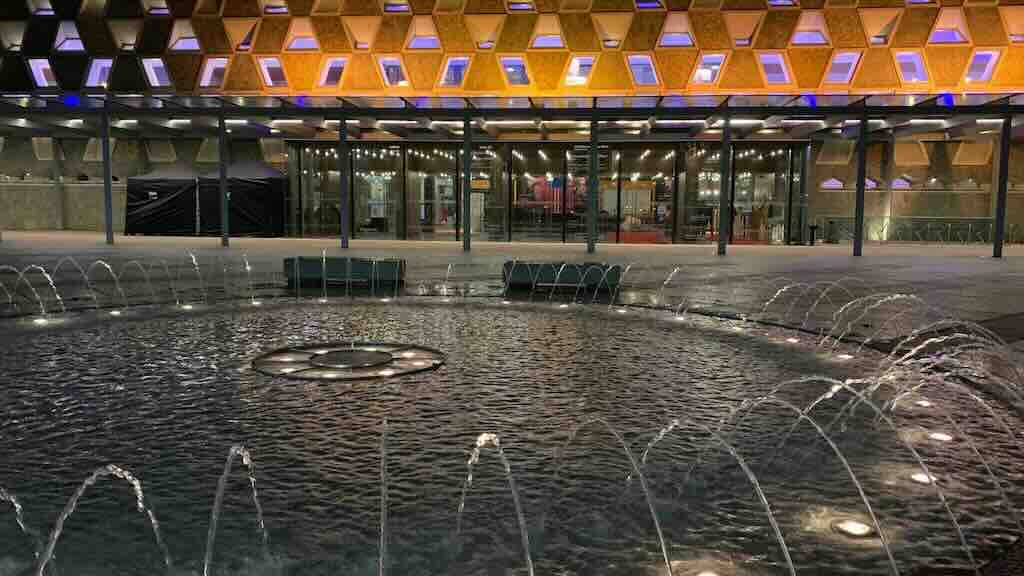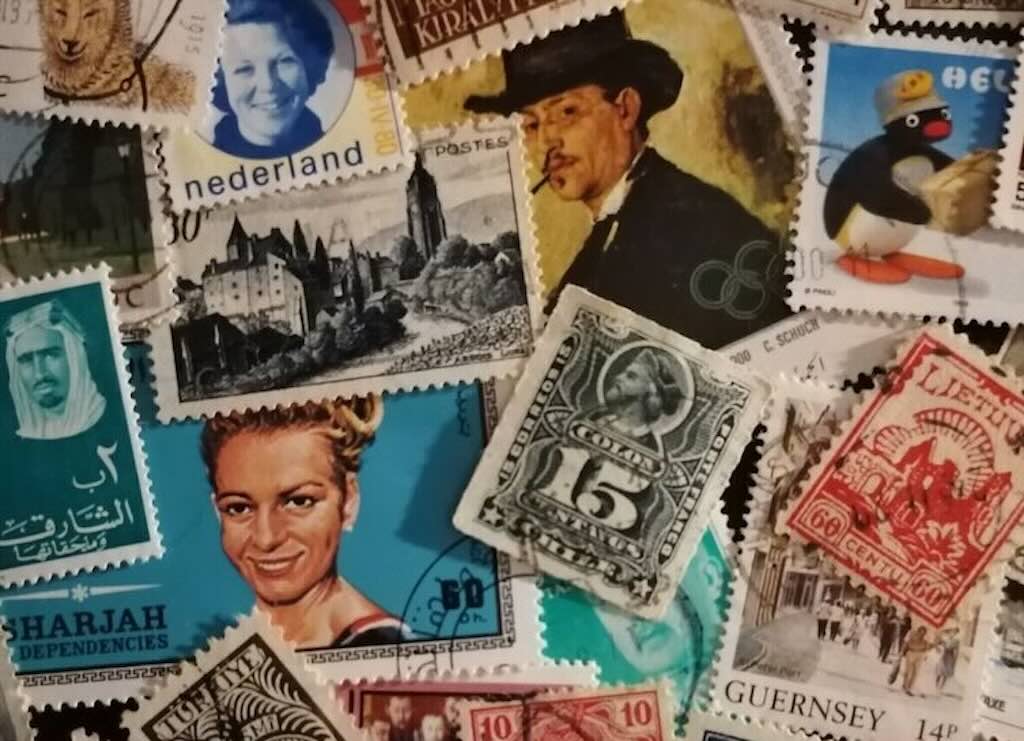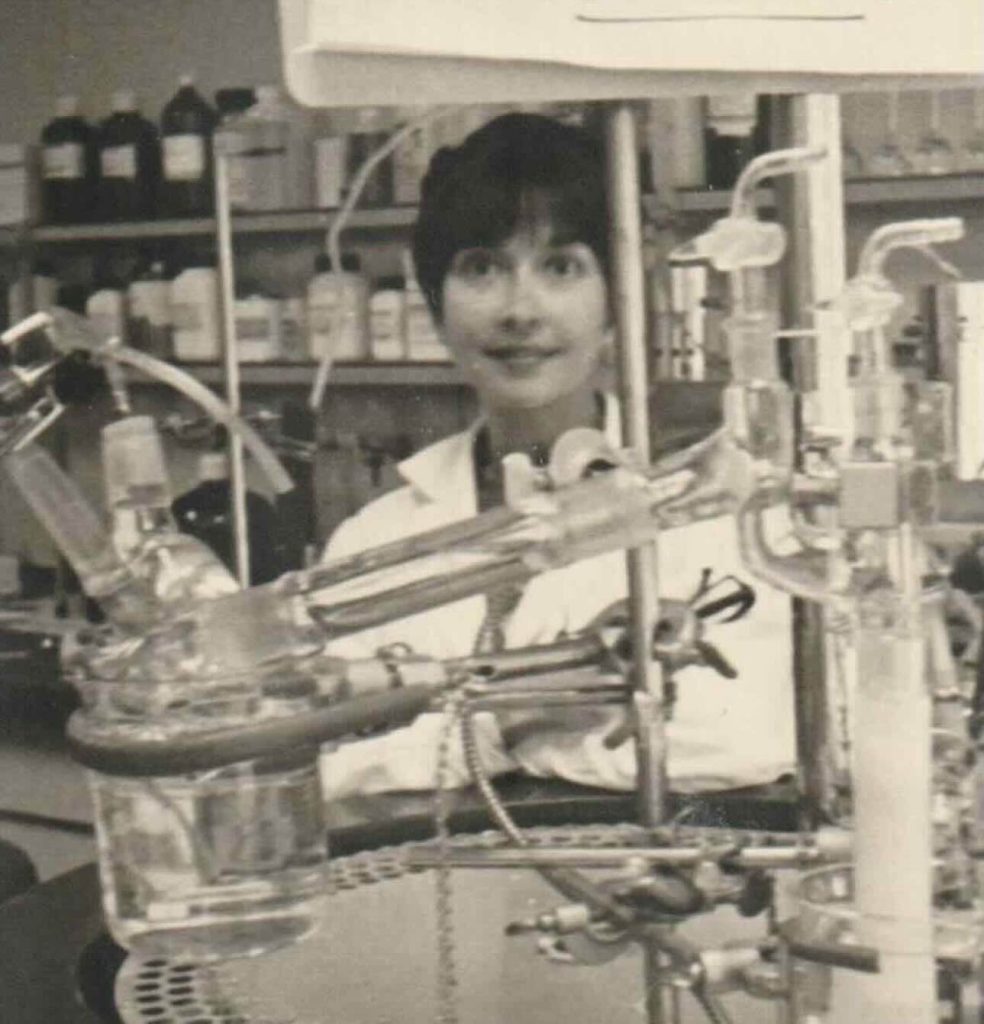Monique was born in 1933 and I first met her on the 5 November 1974. We were together until she passed away at 17:00 on 23 December 2023. Today she lives on in my memories, but in those first dark days my thoughts were different, confused, marked by anger at the futility of life, and fear of the future.
I knew it might happen, would happen, but my world fell apart anyway.
My initial reaction was to throw everything away. Nothing counted, nothing had value. But I was brought up differently, you can’t fight your genes and early upbringing.
My mind was submerged in a kaleidoscope of pain, some regrets, many images from a few days previous, all mixed with good memories reawakened from our 49 years together.
I decided to build a barrier to try to stop that tsunami of negative emotions, a wall made of bricks, each a cherished memory. I grasped the idea, as someone might seize an old piece of wood when lost as sea.
My barrier works, at least some of the time. But I know I will probably always be creating, refining and stacking those memory bricks for the rest of my life. My barrier will never stop all those painful emotions, and I realise now that I don’t want it to. Those painful emotions also help keep Monique alive, not just as a diary of memories, but as a living spirit within me. In fact I fear now to see one day those memories and emotions fade and vanish. Writing things down, keeping my photo archive alive, touching objects she owned, even studying old invoices, reading old postcards, all helps nourishes my memory.
One of the first things I did was to try to write down a chronology of what had happened over the six month preceding Monique’s departure from this world.
It was a brutal condemnation of life, but I thought that it would be part of the foundation for my wall. I was wrong, you can’t build a wall of good memories on a foundation of pain and anger.
So I removed the draft, set it aside, and turned to more positive thoughts.
I understand fully if someone does not want to read on. But now I want this memory to be a reminder for all. As time gracefully flows by, it is so easy to miss the little signs that tell us about the health of a loved one.
This post describes her stoke in Italy, and her stay in hospital before she returned to Luxembourg.
Maybe one day I will write another post describes her time in hospital in Luxembourg, and even the period we spent in the care home, and our last moments together. Today is too early, and maybe it will always be “too early”.
Monique's early interest in biology and physiology
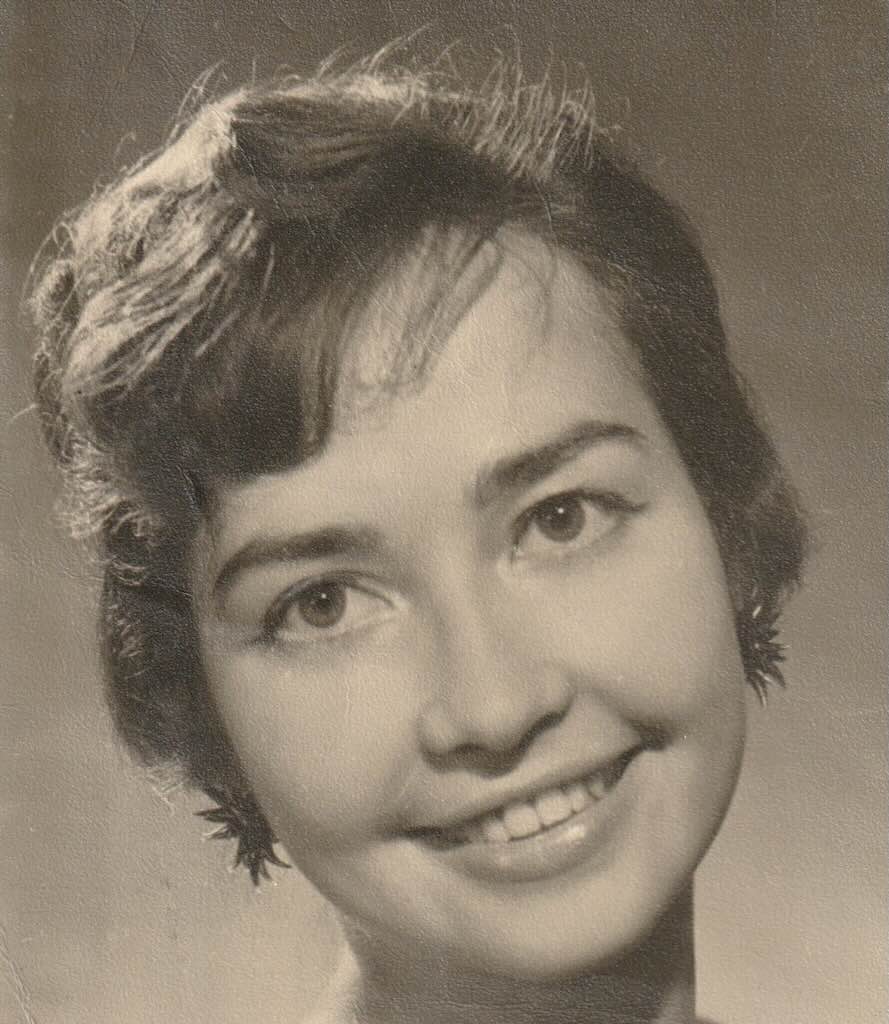
Monique was born in French IndoChina of French parents. Her father was born in Chợ Lớn and her mother in Hanoi. Monique completed her baccalaureate in Nice in 1952, and started work in a local laboratory analysing blood samples.
By 1957 she had moved to Paris to work in the laboratory attached to the factory of Cotelle et Foucher, at the time owners of Mir and the Super Croix laundry brands, including La Croix bleach.
Émile Cotelle and Étienne Foucher were two entrepreneurs who built the famous Javel La Croix factory in Paris. Émile Cotelle established his first chemical factory in 1866 in Javel, an ancient village near Paris attached to the capital in the 19th century. Nowadays, Javel is one of the districts of the 15th arrondissement. As for Étienne Foucher, he had his own factory in Paris on rue La Croix. The two men joined forces in 1908 under the Cotelle et Foucher brand, and began to expand into France. The factory prospered until the 1970s, but then the buildings were pulled down, and today only the old wall that once surrounded the factory remains.
By 1962 Monique had moved to a nuclear research centre called SCK-CEN, located in Mol, Belgium. Her work there was in radiochemistry.
The Belgian Reactor 3 (BR 3) was built in Mol and was the first pressurised water reactor (PWR) in Europe. It came into service in 1962, and was shut down in 1987.
In September 1966 Monique was recruited to the biology department in Ispra, Italy, a nuclear research centre and part of the European Commission’s Joint Research Centre. She was a laboratory technician in the field of radiobiology. But before I met her she had gone back part-time to university in Nice to earn a degree in biology (human physiology).
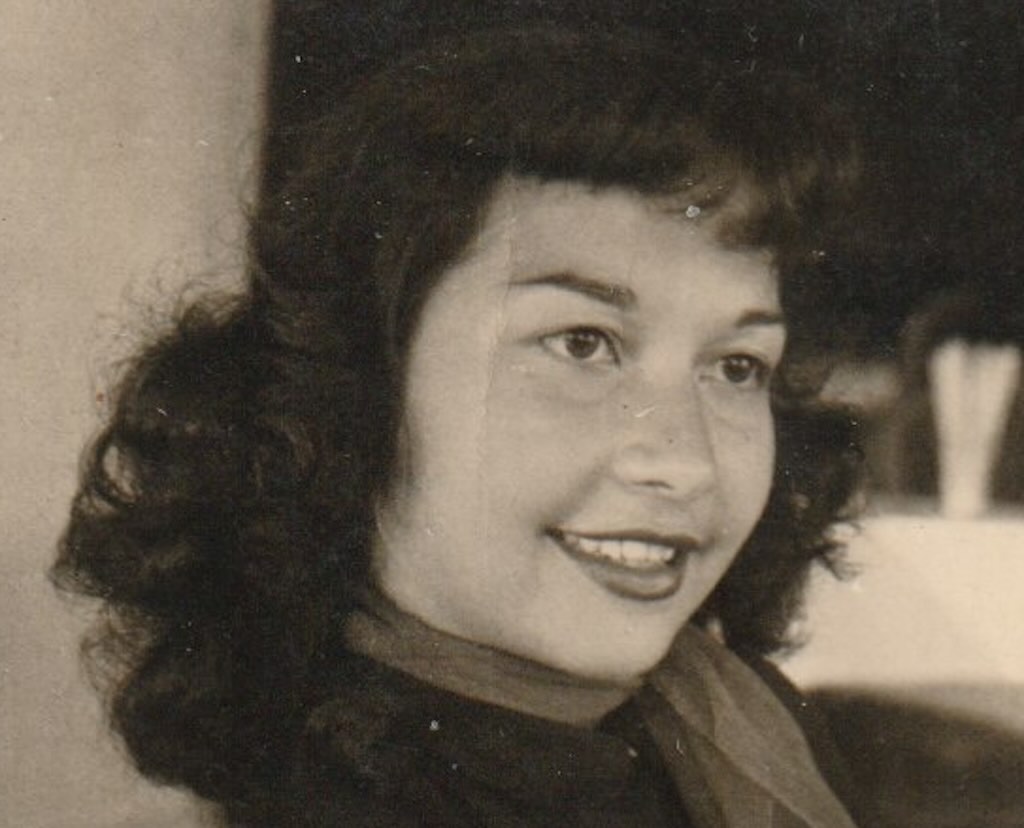
We lived together from 1975, and moved together to Luxembourg in 1981-82.
Monique read and understood every single word on all the medication she was prescribed, and sometimes refused to take some specific medication because of the excessive side effects. The key lesson here was that doctors tend to treat patients as stupid, and many of them don’t check if a patient takes or doesn’t take the prescribed medication. A good doctor will discuss and understand when a patient wants to know more about what they are swallowing. They will explain, possibly convince, and sometimes find less intrusive alternatives. Monique was a “good patient” and insisted in discussing with her doctors what was prescribed and what the side effects meant.
Monique had an atrial fibrillation during a colonoscopy. For several years she took a blood thinner, but later more than one cardiologist suggested that she could stop because there were no residual negative signs in her electrocardiogram. Later the neurologist who treated Monique after her stroke clearly said that stopping to take a blood thinner after an atrial fibrillation, irrespective of the patients physical condition, always increased the risk of a stroke by a factor of 3 or 4. For example Wikipedia writes that “for those at low risk of stroke, atrial fibrillation does not necessarily require blood-thinning”. Yet the neurologist was very clear, after a atrial fibrillation, never stop taking a blood thinner.
How souls catch fire
I still remember to this day the first time I saw Monique. It was on the 5th November 1974, and she impressed me with her smile, her friendly attitude, her sexy French accent, and her beautiful eyes.
Over time I learned that Monique spoke with her eyes, and I slowly learned to open my soul to her through my eyes. When we had the occasional problem, I would look into her eyes, and the problem would fade into insignificance. When she gave me “that look”, I knew immediately that I would have to back down, pray for forgiveness, and occasionally clean food off my face. Every day we shared a moment when we would exchange a look, it became part of our ritual of life together. A look, a kiss, hands touching hands. I learned that Monique needed that look, that touch, that word, …, it was like food for her, it nourished her soul.
The power of touch, a look, was never more important than when Monique had her stoke. Several times per day I would sit directly in front of her, remove our glasses, hold hands, and I would look into her eyes until she smiled. I tried to pass a message of love, and that I always would be there “hand-in-hand”, no matter what.
Only once did she fail to smile, it was in the late afternoon on the 12 December 2023. I took her out in to the garden of the care home. It was a bit chilly and there was a drizzle in the air. We sat, held hands, said nothing of importance, just watched the world go by, and when she smiled again, we went back in for dinner. I remember I had to change my shorts, I hadn’t noticed that the bench was wet.
Monique's overall health
Working in a nuclear facility meant being constantly checked, i.e. blood tests, physical tests, “whole body counts“, wearing an obligatory film badge dosimeter, etc.
Later, and even after retirement, Monique was still very aware of the need for regular medical checks, i.e. blood screening (July 2022), doctor visit (Dec. 2022 and May 2023), gynaecological smear (Dec. 2021), mammography and bone densitometry (Oct. 2018), cardiologist (Sept. 2021 and April 2022), etc., and “preventative medicine” (her 13th examination was in Nov. 2018).
She took daily a prescribed beta blocker, a drug to control high blood pressure, and a drug for a thyroid hormone deficiency. All well below maximum daily limits.
Hypertension is rarely accompanied by symptoms, and its identification is usually through health screening. Yet it is a major risk factor for stroke, coronary artery disease, heart failure, atrial fibrillation, peripheral arterial disease, vision loss, chronic kidney disease, and dementia.
Monique was a postive, active, modern woman

The above photo was taken on 23 June 2023 in the Valgrisenche valley of the Valle d’Aosta. It was 3 days before her 90th birthday, and 6 days before her stoke.
My perception of Monique's health
I was the person who knew best Monique, her physical health, her mental alertness, her memory, the steadfastness of her character, etc.
This is not the place to detail our life together, but Monique was always active and of good humour. She had been a very good skier, once played a nice game of tennis, and in later life we learned to play golf together. We travelled extensively, she learned to play bridge so we could play together, but, unlike me, she was not at all competitive.
Before I met Monique her knees had already been operated on three times for skiing accidents. During our life together Monique had both her knees replaced, and operations for hallux valgus on both feet. But I could see her willpower and strength of character in the way she took the operations in her stride and focused on 100% recovery (just as she had done after her earlier skiing accidents).
Monique never looked back, she lived in the present, and took the future as it came with the expression “Que Sera, Sera” (whatever will be, will be). Monique had a youthful soul and lived life with enthusiasm. What the stroke did was affect her “inner child“, but not her love of life.
As someone wrote “Ageing is just another word for living“. We all age, some gracefully like Monique, some are dragged screaming and yelling, like me.
I expected some loss of memory. I expected some mobility issues. I expected some trouble with hearing, eyesight, joints, and even the appearance of wrinkles and dry skin. But Monique aged like a fine wine, as I am ageing like an old beer.
As I look back, I can see that she started to have a few mobility problems in 2020-22, but they were solved with a béquille at home, and my arm outside. It was only in the winter of 2020-2021 that Monique limited herself to chipping and putting on the golf course, and only in 2022 did she stop playing-around on the putting green. But she still accompanied me in the buggy, enjoying the sun and fresh air, and always appreciated sitting on the terrace for a late lunch.
Monique’s memory was always determined by her wish to ignore the past. What year was it, what day of the week, when did we arrive in Spain? She did not care, for that was all in the past. It was not an issue of memory (or was it). She remember things from the past that she wanted to remember, family, friends, life together, her PIN code, but times, places, histories, …, didn’t count for her.
From 2021 Monique was less talkative in a group. I put this down to a problem of hearing, which she always refused to admit. But face to face with the doctor, as late as Dec. 2022 and May 2023, she manifested no particular cognitive problem.
Not once did a local practitioner try to sneak in a question or two to test for memory loss, or the feared dementia.
It’s so easy to look back and think that a timely placed test (an MRI or a CT scan), might have preventively identified and diagnosed what would later happen. Who knows, but it weighs on my conscience.
Health Assessment Diagnostics
When I and my wife retired, we were both careful to establish a health baseline, e.g. blood tests and markers, chest X-ray, colonoscopy, eye checks, cardiology, visit to the dentist, etc.
And we continued to do regular routine checks, along with a “preventative medicine” package provided by our medical insurance provider.
A regular visit with a general practitioner should normally help detect any changes in health indicators and risk factors. This is usually supported by the results of blood and urine tests (and possible including faecal matter), and can be associated with an ECG (or even a 24/48 hour holster), colonoscopy, and for women a mammography, bone density scan, and visit with a gynaecologist.
Today I’m inclined to believe that CT scans and MRI are valuable diagnostic tools i.e. “preventative imaging“. The British Heart Foundation notes that computerised tomography (CT) scanning can be useful to help identify and diagnose heart problems and determine how severe they are. Even for a healthy person with no neurological symptoms, an MRI brain scan can detect abnormalities like lesions, cysts, tumours, previous or current bleeding, swelling, structural defects, indications of an infection or inflammation, as well as blood vessels problems like aneurysm, which is can be a starting point for clot formation (thrombosis). It can also expose damage from a previous stroke or head injury.
A CT aorta scan can look for any evidence of dilation which could be the early signs of an aneurysm (a bulging or ballooning in a weakened blood vessel wall) and which if untreated can lead to a catastrophic rupture.
A CT heart scan (Calcium Score) can show if the heart arteries show calcium deposition, the earliest sign of atheromatous disease (commonly known as ‘furring up’ of the arteries). A heart scan can also directly visualises the inside of a hearts arteries, and highlight the exact location and severity of any atheroma.
A CT angiogram can visualise the so called ‘soft plaque’ which is atheroma that has not yet calcified and which is the most vulnerable to rupturing and causing a heart attack. This is the so called ‘widow maker’ lesion which often affects individuals who have few if any risk factors for heart disease and who appear, superficially at least, to be fit and healthy.
A CT scan can also help detect early signs of lung cancer, as well as signs of abnormalities or tumours in the liver, gallbladder, spleen, pancreas, adrenal gland, kidneys, bladder, lymph glands, and perform a virtual colonoscopy.
An MRI brain scan can look for any indications of tumours or significant abnormalities, including of the sinuses and inner ears.
What happened on 15 August 2021?
I’m going to insert here something that I only identified recently.
Looking back I can vaguely remember a moment a few years ago when Monique woke up in the morning looking very confused and lost. I remember it was in Spain, but I don’t remember when, but I know she recovered within minutes and was ready for breakfast. I still remember that moment of panic, replaced by a “thank God”, and then “it must have been nothing”. But more recently that momentary memory has been nagging on my mind.
Was that a foretaste of what was to come? Was that moment related to that little, potentially old, blood clot? Who knows.
Monique, like her mother, always wrote down what happened day-by-day. Her mother used little note books, and I still have one of them in my files. Each year I would buy a “daily diary” (one page per day), and Monique would fill each page with her comments on the weather, the medication taken, what we did that day (golf, travel, etc.), what she saw on the television, the number of steps she took (measured with her Fitbit), even what we didn’t do that day,… etc. Every three or four years I would shred the old diaries.
Recently I shredded her old diaries, and I noticed something unusual. I had already noted that Monique no longer used her 2022 diary, and I didn’t buy her a 2023 diary. But now I noticed that she stopped abruptly using her 2021 diary on the 15 August. It is true through 2021 she had started to write less on each page, but there was always one or two well written comments that covered a good part of each page. Her handwriting was neat, and nicely aligned on each page.
After the 15 August 2021 she only wrote on three pages. The first a doctor’s appointment on the 26 August, almost certain written in before the 15 August. The second a reminder to pickup her new passport on 2 December, and the third a reminder that we would leave for Spain on the 18 December. Each entry was 8-10 words, poorly alined, and her handwriting was less precise and neat.
I can’t help associating that change in habit with that look of confusion, and that small blood clot. Should I have taken those signs more seriously? Possibly, is the sensible answer. But I will always think that I was at fault, that I should have been more watchful. That thought will accompany to my grave.
One additional comment, or warning sign. If you look carefully at the above photo you will see a slight asymmetry in Monique’s mouth. I had noticed this occasionally, but it came and went. Much later in the care home, this asymmetry would manifest itself in a number of more evident ways. But the girls in the care home did tell me that they saw this asymmetry with people who had a stroke and/or were diagnosed with vascular dementia. And sometimes it was easy to see, and sometime far less so.
What happened on the 29 June 2023?
In our small apartment in the Valle d’Aosta it was Monique’s habit to take a kind of late siesta. She would shower early, we would eat our main meal of the day around six in the evening, and she would then take a short siesta until about eight in the evening (leaving me time to tidy up and take my shower). Occasionally, when we had been out all day, Monique might sleep a little longer. Later we would watch TV and go to bed just before midnight.
I remember asking Monique at about eight in the evening, if she wanted to come down and watch TV, she replied “No, a bit later”. Around nine in the evening I woke her up. It was very difficult. I became worried, and after rather brutally shaking her, finally she woke up. She looked totally confused, and could not speak. She could not move properly and certainly could not stand.
Luckily our small village had its own health care centre, with an ambulance on 24-hour standby. Within 5 minutes they were with us. By then I could see that Monique was no longer totally confused, at least she recognised me.
I always have a clear idea about the emergency services, where they are and how to contact them. The phone numbers were programmed in our three iPhones.
This stroke occurred when Monique was asleep, but a stroke can occur at any time, and FAST is an acronym used as a mnemonic to help early recognition and detection of the signs and symptoms of a stroke.
The ambulance team ask some simple questions (including if Monique was diabetic), and quickly concluded that she might have had a stoke. They phoned for an ambulance from Aosta. Whilst waiting they did the usual checks and gave Monique an injection (probably a blood thinner). Within 30 minutes Monique was on her way to the main hospital in the valley, the Ospedale regionale Umberto Parini. I picked up some clothes for Monique and drove to the “pronto soccorso“, the emergency service.
What happened in the Pronto Soccorso?
Whilst Monique was having an X-ray and in the CT scanner, I explained the situation to the doctor on duty. At 23:00 she gave Monique a complete medical check. She concluded that Monique was in good health for her age, was alert, had a stable pulse and heart beat, and appeared to be breathing normally.
A blood sample had been taken for screening. Monique’s results were reasonable, however she was diagnosed with “acute renal failure on a prerenal basis”. This sounds bad and should not be ignored, but it’s actually defined as “a rise of creatine greater than 1.5 times the baseline (presumed to have occurred in the last seven days)”. I was able to provide them with Monique’s last blood analysis, and so the diagnostic was certainly true, but the problem could be treated.
The chest X-ray also showed some basal thickening on the right side, possibly scar tissue due to a past infection.
Then came a basic neurological examination, typically applied to stroke patients. It’s designed to assess mental state, speech, coordination and movement, reflexes, pain and sensitivity to touch, vibration, etc., ability to stand and walk, etc.
However, Monique could not speak and did not appear to understand when spoken to. This is often related to some form of temporary or permanent brain damage, but also makes a neurological evaluation difficult. The pupils of her eyes and her oral rhyme were both symmetrical. She could move both her arms and her legs, but movement was more limited on her right side (this may have been due to the pain she felt in her right shoulder, the result of a fall in 2019). On the positive side, she appeared sensitive to touch and her reflexes were intact.
More generally, Monique’s heart had a good rhythm and pulse rate, and there were no abnormal noises in her chest.
The CT scan showed that there was no internal bleeding, and thus no need for a thrombolysis, i.e. to break up a clot or prevent further clotting. Also the different areas in the brain were in place, so I presume this meant no obvious head injuries. The problem is that with ageing there is always a degree of cognitive decline with both healthy and pathological (diseased) brains. And this decline is strongly correlate with morphological changes, referred to as cerebral atrophy. Examples include cortical thinning of the outer layer of the cerebrum, and white and gray matter volume loss. Another effect of age is the widening of the hemispheric sulci, i.e. the grooves in the cerebral cortex, and the ventricular system, i.e. the cavities filled with fluid that cushion the brain. The CT scan also showed a leukodystrophy or deterioration in the white matter, which over time could cause complications. There were also signs of extensive calcifications.
In this world of CT scan interpretation, the specialists love to use a complicated vocabulary, but it all boils down to describing what they see in the images (it’s not a diagnosis). Then it’s the turn of a neurologist to try to explain what those images mean in terms of a given patient. What happened in the past, what was the cause of the accident, what is the situation today, and what to do in the future?
I have pieced together bits from the doctor in Aosta and the neurologist in Luxembourg. The blood flow to Monique’s brain was affected by calcification, and the result was that a certain area of her brain did not receive sufficient oxygen and atrophied. I only learned later that Monique had quite narrow arteries and veins, and that the walls (of her veins) were thinner than normal. It’s possible that over time Monique was eating less protein, and this can cause thinning of the walls. Narrow arteries and veins accentuates the effect of calcification.
In addition there was a mention of a small blood clot. It did not pose a problem in terms of treatment on that day, but it left some open questions. Was the clot recent, or from a past stroke? It’s important to know that an ischemic stroke is caused by the blockage of an artery (or, in rare instances, a vein), and represents about 87% of all strokes. The rest are hemorrhagic strokes caused by bleeding.
Was this clot from this particular stroke? The opinion of the team in the pronto soccorso was that it was an old clot. The reality is that 30% to 40% of strokes cannot be easily explained, and many don’t leave any permanent signs.
I want to drive home some key facts about stokes, namely:-
- About 1 in 6 deaths from cardiovascular disease are due to stroke.
- About 1 in 4 people over 25 will have a stroke in their lifetime.
- Nearly 1 in 4 of those are in people who have had a previous stroke.
- About 87% of all strokes are ischemic strokes, in which blood flow to the brain is blocked.
- Stroke risk increases with age, but strokes can occur at any age, in fact nearly 40% of people hospitalised for stroke are less than 65 years old.
- 47% of all strokes occur in men, and 53% in women, and the corresponding figures for a ischemic stroke are 45%/55%.
- Most can recognised sudden numbness on one side as a symptom of stroke, but less than 40% were aware of all major symptoms and knew to call emergency services when someone was having a stroke.
- Patients who arrive at the emergency room within 3 hours of their first symptoms often have less disability 3 months after a stroke than those who received delayed care.
Check out “Avoiding Heart Attacks and Strokes” from the WHO.
A night spent in the Pronto Soccorso?
My impression was that the doctor in the emergency service decided that Monique was not under any immediate risk. She was put to bed, in a kind of “holding ward”. I guessed that the nest morning there would be further tests and then they would have to decide what to do. “Ward” is an exaggeration, it was really just an open room-space with eight beds all occupied (no curtains, etc.). One or two patients were connected to drips, but there was no monitoring equipment, etc., although a nurse passed by regularly to check vital signs.
All the patients had family around them, but there were not enough seats. So there was a kind of natural ballet as one or other would stand and offer a seat to their neighbour. Everyone taking turns. No one slept, and everyone appeared to be constantly checking their phones. Fortunately Monique slept until the morning. I didn’t see the doctor again, but the nurse told me that Monique was stable, and not to worry, and that they would do some more tests (I think another scan) and decided what to do in the morning.
At night there was nothing open, and there was just a machine distributing water bottles. I have left the apartment, but not taken any coins. I returned to the car, found a €1 coin, enough for a small bottle of water.
At one point in the morning Monique disappeared for another scan and tests, and I managed to sneak out to a local coffee shop for breakfast. Finally about 11:00 I was told that Monique would be transferred to another hospital in Aosta. They made it very clear that Monique had the symptoms of a stoke, but that the brain scans were inconclusive.
I was able to drive back to the apartment, shower, and then return to Aosta with some “necessities” for Monique.
Ospedale Beauregard
During the morning of 30 June 2023, Monique was transferred to Ospedale Beauregard, which unsurprisingly given its name, was situated on a hillside with a nice view over the city. It’s not a day hospital, but provides services for geriatrics, neonatology, obstetrics and gynaecology, nursery, paediatrics and gastroenterology.
As with many Italian hospitals the entrance looked a bit run down and “frozen” in the 1960s. But the geriatrics ward, where Monique was placed, was spacious, bright and airy. There was a feeling of calm efficiency about the ward, a feeling which remained with me throughout Monique’s stay there. She would stay eight nights, and the staff were always friendly and understanding. I was impressed.
The doctor was middle-aged and a bit scruffy, but I felt that he was largely responsible for the easy-going efficiency seen in the ward. The ward was locked for obvious reasons. One patient was both noisy and extremely vulgar, but the staff just took it all in their stride. They told me immediately that he would not enter the rooms of other patients, and was not violent, just vulgar and noisy.
Monique was in a room with two other women. She recognised me, but could only say a few words. However I immediately saw in her eyes that she was present. What a relief.
The doctor warned me immediately that Monique’s situation was not stable, it could improve, or not. He didn’t think she was in any danger, but the prognosis was open.
I informed him that I had contacted Europ Assistance to see about taking Monique back to Luxembourg. The doctor was quite clear, Monique could only be moved if he felt that her health was stable.
Every day I would sit with Monique during the visiting hours. And slowly she recovered her speech, but she was not able to move from the bed. She slept a lot, but I tried always to be by her side when she woke.
An example of the calm efficiency of the staff was when the elderly woman in the bed opposite Monique passed away. The routine was almost identical to someone just leaving the ward for a routine examination. I think I was the only person who noticed it, Monique and the other lady in the room did not appear to notice anything unusual. Everything was double cleaned, and another, much younger, woman was admitted in the evening. She did not look well at all.
In the mornings Monique had physiotherapy including both speech and walking. She manifested a weakness to the left (I guess linked to brain damage on the right), and was not able to walk properly. They found that Monique could again masticate and swallow food and water in small quantities.
Although promised, I never received the medical report for Monique’s discharge. But the hospital in Luxembourg noted that the report mentioned that Monique was stable but suffered from a left insular ischemic stoke, and that initially she had problems communicating. The aphasia was resolved during her stay, but there was a persistent motor disorder and swallowing disorder. She had a lung infection caused by inhaling saliva, food, liquids, etc., and a number of lesser problems such as anaemia and a moderate denutrition.
Finally, Monique manifested some cognitive problems, certainly far more evident than in the past. The brain scan performed on the day before her departure showed the chronic presence of “white matter“, which is correlated with cognitive impairment and vascular dementia.
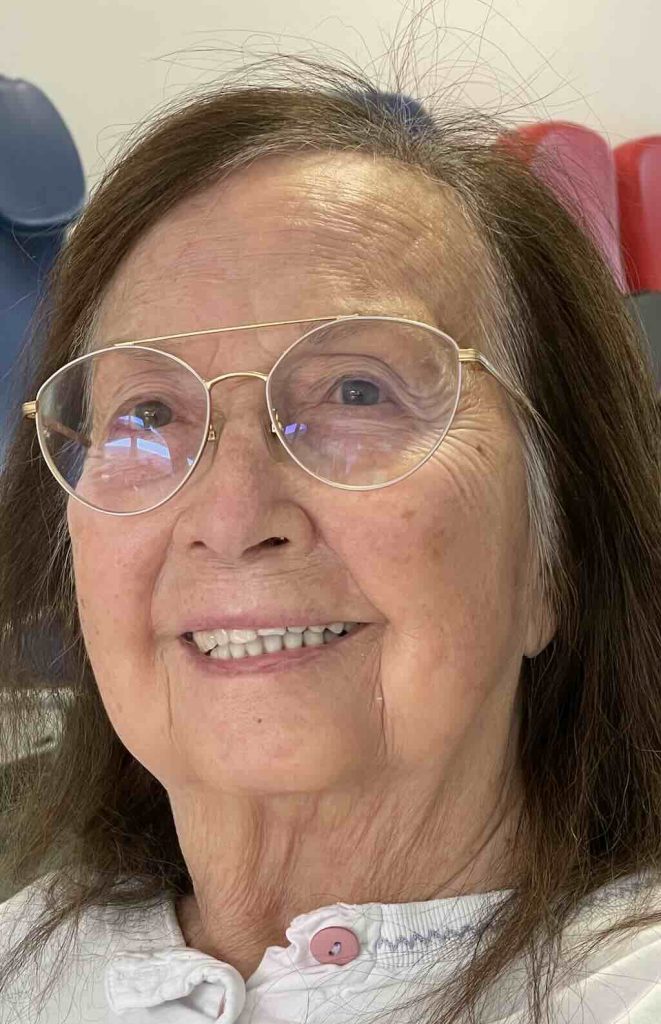
Back to Luxembourg
In many ways the link between Europ Assistance and the hospital worked perfectly. Europ Assistance would transport Monique back to Luxembourg when the hospital felt she could be safely moved. Finally, eight days after arriving in the hospital in Aosta they agreed that Monique could return to Luxembourg in an ambulance, accompanied by a nurse.
Luckily I phoned Europ Assistance regularly and discovered the planning. I was able to close the apartment and drive back to Luxembourg, and wait. Finally I was told that Monique was in the emergency service of the Centre Hospitaliser de Luxembourg (CHL), the hospital on standby on Saturday 9 July.
23 December 2023 17:00
Even today it’s too painful to think about what happened when Monique left this world. At that moment I could have simply held her hand and gone with her.
It is now more than 18 months, much has changed. Monique remains by my side, sometimes very near, sometimes hovering in the background. My mental state, for want of a better expression, has changed over time (not evolved, just changed).
One thing is sure, time does not heal, I will always hate hospitals, and I will never “accept” what happened.
I know this might sound foolish but I am slowly evolving two distinct “lives”, one a continuing inner life with a force called Monique, and a “second life” in which I resemble an ordinary almost civilised single elderly man (some might say grumpy, but I prefer to be crusty). My remaining years will be one of balancing the complementary energies of my inner yin and my outer yang.
I now don’t fear death, but I’m sufficiently “pig headed” to try to “beat the system” and live forever. When my time comes, Monique is waiting for me.



